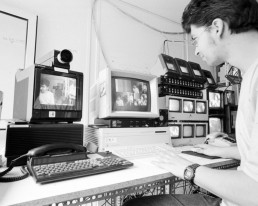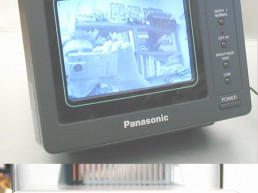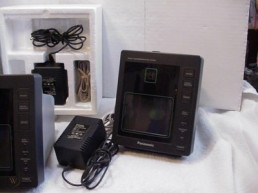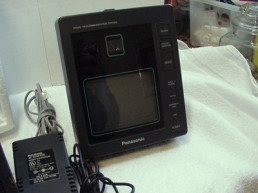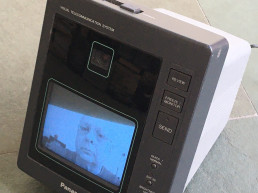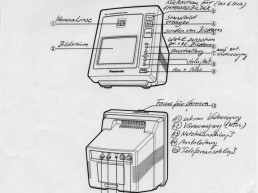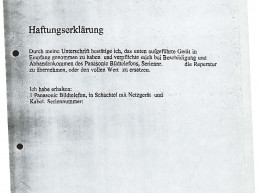Use of slow-scan TV and ISDN videophones
Christian Wolff using an ISDN picture phone at the studio in Kassel (Foto: Ali Altschaffel)
Three Panasonic picture phones at the studio in Kassel behind Salvatore Vanasco (Foto: Ali Altschaffel)
Benjamin Heidersberger (Van Gogh TV) showing a Panasonic picture phone (Foto: Tilman Baumgärtel)
Most of the Piazzettas sent their programme to Kassel via videophone. This circumvented the costly satellite transmission that traditional television used for international live broadcasts. Those who connected the devices to an analogue telephone network could transmit individual images. Apart from a few technical details, the technology was similar to the slow-scan TV method. The video clip shows an excerpt from a broadcast from Piazetta Riga. The b/w pictures are transmitted by slow-scan, the sound comes via a mobile satellite telephone. At the bottom right of the picture you can see the presenter Indulis Bilzens, a native of Latvia, sitting in front of the camera in Kassel and translating for the German audience.
Already at the end of the 70s, artists such as Bill Bartlett, Sharon Grace, Carl Loeffler, Liza Bear, Robin Winters. Paul Wong, Robert Adrian X and others experimented with the medium. They used it in early artistic telecommunication projects such as “The World in 24 hours” (1982 at ars electronica), the Wiencouver project series (1979 – 1983) or “Hands across the border”.
Panasonic WG-R2
Documents
